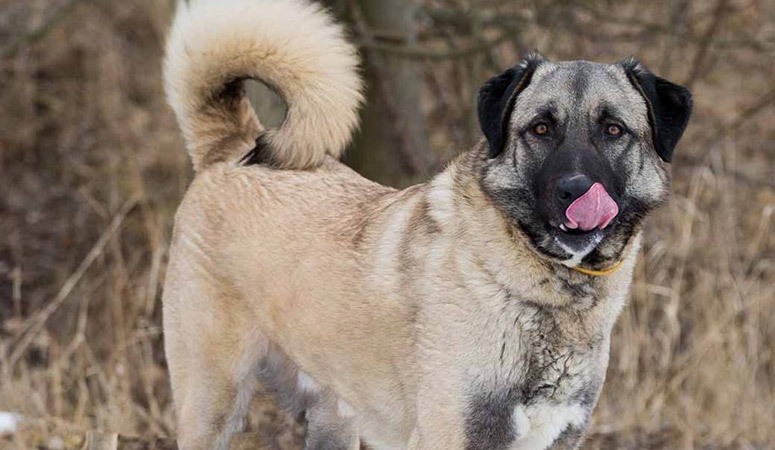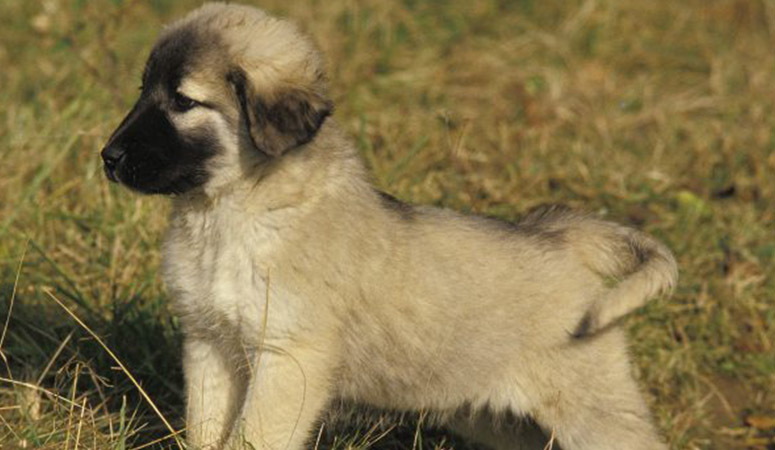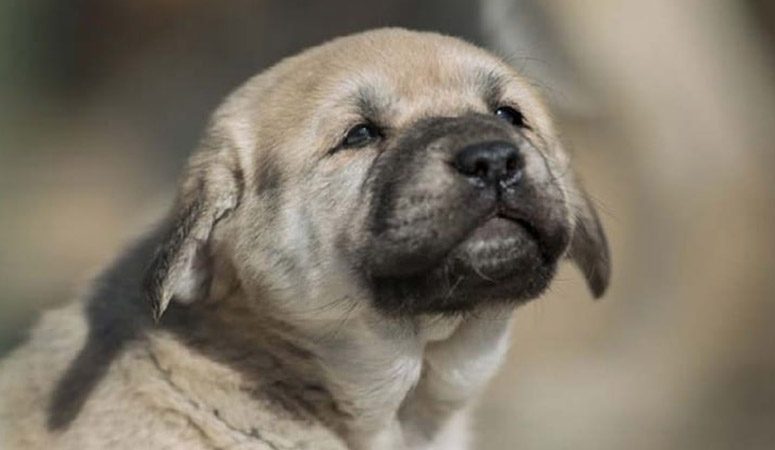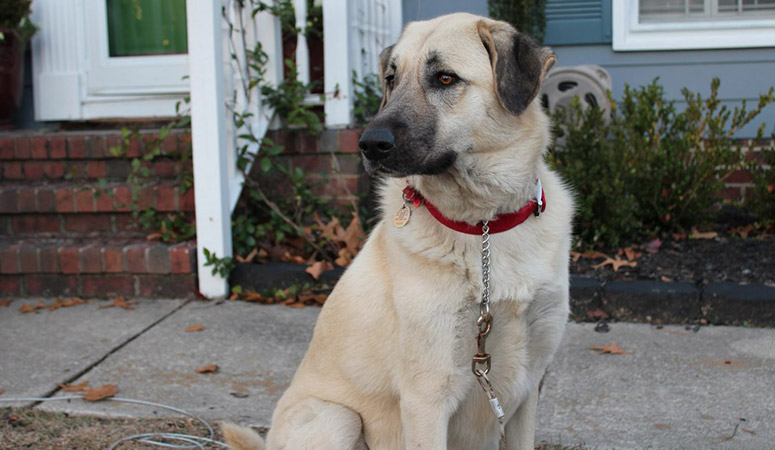Anatolian Shepherd Dog
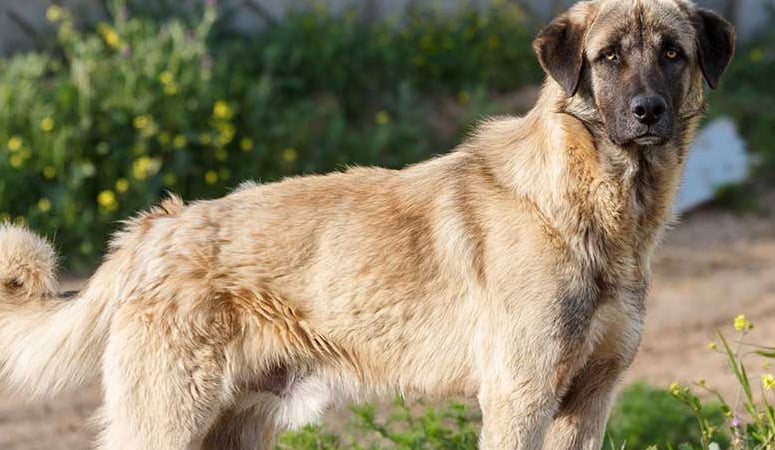
Originated in Turkey and developed as a shepherd’s companion and livestock guardian, the Anatolian Shepherd is a large, powerful, rugged dog, and protective and territorial. They are considerate as one of a bold yet calm protector as their intelligence, patience, and loyalty.
| Other Names | Anadolu KoPek, Anatolian Karabash Dog, Anatolian Shepherd, Coban Kopegi, Karabas, Turkish Guard Dog, Turkish Sheepdog |
| Color | Biscuit & White, Blue Fawn, Brindle, Fawn, Gray Fawn, Liver, Red Fawn, White |
| Height | Males: 29-32 inches. Females: 27-31 inches. |
| Weight | Males: 110-150 pounds. Females: 80-130 pounds. |
| Life Span | 11-13 years |
| Personality | Loyal, Independent, Reserved |
| Exercise | Regular Exercise |
| Origin |
| Popularity | #94 |
| Groom Needs | Weekly |
| Kids Friendly | Yes with supervision |
| Dog Friendly | Yes with supervision |
| Watch Dog | Yes |
| Family Dog | |
| Litter Size | 5-10 |
Anatolian Shepherd Dog Pictures
Anatolian Shepherd Dog Video
Introduction
The Anatolian Shepherd Dog is a breed with origins from Anatolia, hence the name “Anatolian”. The dog is large and very strong and is known to have a good vision and sense of hearing which makes it a great choice in protecting livestock. It is blessed with great speed and agility which enables it to chase down predator efficiently.
The coat of the Anatolian shepherd dog is a thick and double one which gives them a heavier look than they really are. The coat color varies from dark fawn to light red.
The Anatolian shepherd dog is characteristically tall and looks rugged with a broad, strong head. It has well developed muscular shoulders and has a long tail with a curl which is slight. When the dog is alert, the tail is brought high and curled over its back. It also has thick hair on its neck with a purpose to protect their throats.
A male Anatolian shepherd dog weighs between 50-65 kg, which is 110-143 lb and stands between 74-81 cm, which is 29-32 inches, at the shoulders. A female Anatolian shepherd dog weighs between 40-55 kg, (88-121 lb) and stands between 71-79 cm (which is 28-31 inches). The Anatolian shepherd dog is naturally independent and forceful and though these traits make it an excellent option for a guardian to its owner’s livestock, it makes it difficult to keep as a pet. Hence, its owners are supposed to make the dog more sociable and make them appropriate companions. They are known to be intelligent and are quick to learn but they can choose to be stubborn and not listen to commands. This breed of dogs is also known for its loyalty and protectiveness of its family and territory. It is normally calm, choosing to observe its surroundings and not go around looking for trouble but it doesn’t back down from a fight if it is challenged to one.
Its lifespan is 13-15 years. A health survey done by the UK Kennel Club in 2004, the only health survey done on this breed of dogs, showed that the commonest cause of death in an Anatolian shepherd dog was cancer which was responsible for the death of 22% of the dogs used in the survey and the least common was old age which was responsible for the death of 13% of the dogs used in the survey.
Living with Anatolian Shepherd Dog
The Anatolian Shepherd is naturally clean, so they don’t need much grooming. Their double coat requires to be brushed about twice a week most of the year, and during the shedding seasons, the dog should be given thorough brushing-out to remove the dead hair, with a short-bristle brush and possibly a comb as well, every few days. And the Anatolian Shepherd just needs an occasional bath about three to four times a year.
Anatolian Shepherds have drop ears that need much care as they can be easy to ear infections. Check their ears every week for redness or a bad odor which may indicate an infection. Besides, brush their teeth several times a week and trim the nails every month to prevent cracking.
Anatolian Shepherds don’t need as much exercise as other large breeds, only a moderate amount of exercise is enough for their need. The owner should take your dog for lots of walks and give it plenty of room to run around. And your dog would be happy with time in a yard which is tall, strongly fenced and with a locked gate. More important is an Anatolian Shepherd must be kept on a leash whenever he is taken out of the home.
And this dog breed doesn’t enjoy the game of catch and fetch. They prefer a challenge such as pulling a sled or cart, or tracking activities.
Generally, it is recommended to feed an Anatolian Shepherd with four to six cups of high-quality dry dog food every day, divided into two meals. More importantly, the food amount should depend on the dog’s weight, size, age, and activity level. There should be fresh and clean water at all times.
Some dogs are easy to get overweight, so you need to watch their calorie consumption and weight level all the time. Treats may be an important aid in training, but excessive intake can lead to obesity. Also, owners need to distinguish which human food is safe for dogs and which are not. If you have any problems with your dog’s weight or diet, just consult from your veterinarian.
Anatolian Shepherds are prone to the following health conditions: hip and elbow dysplasia, hypothyroidism, ear infections, hypothyroidism, demodectic mange, entropian, etc.
Occasionally seen: elbow dysplasia
Minor concerns: entropion
Major concerns: CHD
Suggested tests:
Hip Evaluation
Elbow Evaluation
Total Annual Cost: $3536
Cost is estimated for the first year and may vary depending on many factors, such as dog food, health care, leash, collar, licensing, possible fencing, crates, training and obedience classes, dog-walking, grooming, treats, toys, flea, tick, and heart-worm meds, microchips, etc.
Anatolian Shepherds are smart, but it is not easy to make training as they like to do things in their own way. This breed could learn basic commands only if with the firm, consistent, and committed training. And obedience training is a must for an Anatolian Shepherds, but it can be a challenge because they are so independent. Besides, it is recommended to start socialization earlier.
There are other good options for Anatolian Shepherds, such as advanced obedience training, dog sports, and agility training. It is not only good for the dog’s health but also will help maintain the owner’s position as leader of the pack in the dog’s eyes.
History
This breed of dogs descended from ancient livestock guard dogs which existed 6,000 years ago in Turkey. Breeders in the West picked interest in these dogs in the 1970s and development of the landrace natural breeds began by the documentation of their descent from specific ancestors, as well as writing breed. Charmian Hussey, author, and archaeologist imported these dogs from central Turkey into Britain. The breed was registered in Australia in 1985 at a time when it was imported as a guard dog over people, property, and livestock. It was Australia’s expansive sheep and goat enterprises which helped make the breed acceptable for the purpose of being a livestock guard dog beyond its country of origin, Turkey. Australia’s livestock enterprises also helped transform the Turkish Shepherd into an imposing livestock guard dog for the agricultural and farming industry.
Helpful Information
Breed Club: ANATOLIAN SHEPHERD CLUB OF AMERICA
Breed Club Link: http://www.asdca.org/
Breed Club Rescue:
Breed Club Rescue Link: http://asdca.org/breedersandrescue.html

